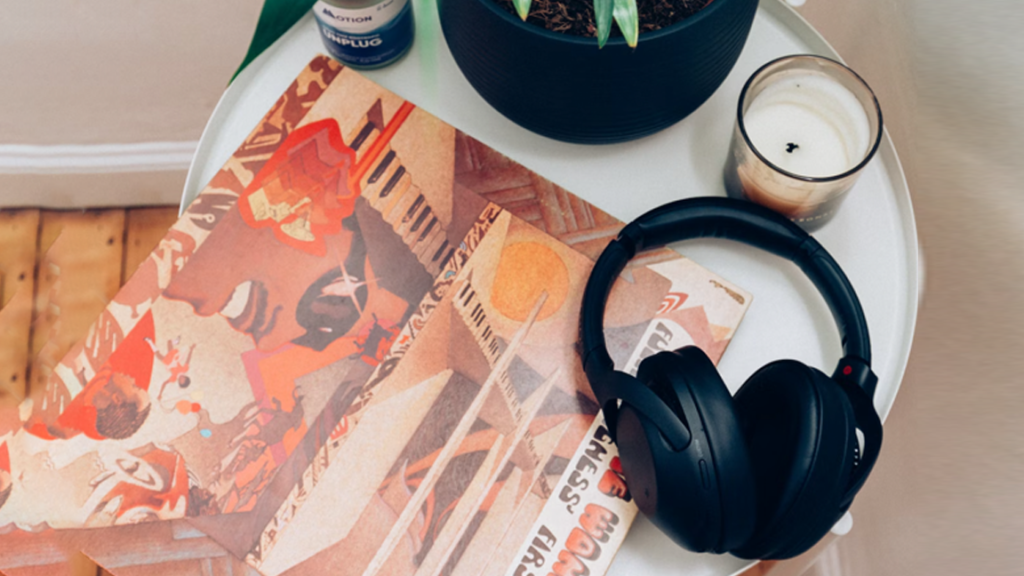
Technology improves our lives in many ways, and we are using technology more and more. This post is about embracing it and bringing it into our lives in the best way possible! I’m going to cover how as homeowners or designers, we can work to find this balance with more spaces within our homes, specifically when it comes to entertainment spaces, tv rooms, or living rooms. Let’s discuss how interior design and technology do not need to contradict each other but work harmoniously!
There are elements in every home that can be segregated into two specific groups. The first group is the “utility” group; these items in our homes are made for function first and design second. Examples include washing machines, dishwashers, radiators, and mattresses. The second group is the “decorative” group; these items are made for beauty and visual presence before they matter as something that functions to help with an activity. Examples of these would be paintings, statues, house plants, and any type of accessory or piece of art. However, we can sometimes reach a balance where form and function meet at an intersecting point and create something truly special and truly beautiful!
I’ve seen all types of private residences in my years as an artist, interior designer, and color consultant. Some grandiose and some intimate, some situated in nature, and some in the heart of our biggest cities. Every home will have unique opportunities and limitations, but believe me when I say every homeowner has the power to balance the technology in their home with design. It just takes that extra bit of creativity and effort to get there!
For the article, I will focus on the most significant technology/electronics found in every home, such as the TV room/entertainment center and dedicated listening space. Depending on the homeowner’s desires, tastes, and personality, I recommend two design strategies for incorporating electronics into their home.
The first is what most people gravitate towards, seamlessly and unobtrusively incorporating their electronics into the space. The second, which fewer opt for, but I find incredibly powerful, is letting the electronic equipment standalone as decorative pieces of art, the focal point of the space from which everything else is oriented. I call it functional ornamentation. Let’s explore this further.
It’s funny; I remember when electronics like televisions, radios, and stereo systems were built to be featured, not hidden within spaces of the home. Manufacturers would use beautiful wood cabinets, polished metals, and handwoven fabrics to create works of art out of electronic components. We’ve come a long way from this type of craftsmanship because of a mix of overseas mass production and the consumer’s desire to hide all equipment out of plain sight. But it doesn’t mean it’s lost; statement pieces exist to this day.
Statement electronics are functional art that no one would invest in just to hide away. If you’re looking for something eye-catching and focal point worthy, try some of these design tips out.
Some manufacturers, usually boutique brands, will create unbelievably gorgeous pieces of equipment; this may be a turntable, amplifier, or speakers, and even some televisions made to look like pieces of art (see Bang&Olufsen). Regardless of the component, the last thing you want to do is hide these pieces of art in a closet. They are meant to capture the attention of the space and have design features built around them.
Design is cyclical; I always say it! You may have noticed in recent years, turntables, records, and older-style stereo equipment have had a resurgence with younger generations. I like to think it’s because people who grew up with all types of entertainment streaming endlessly around them finally found some value in physical media and a more dedicated state of listening.
Putting on a record is a ceremonial process; listening to it is inherently more attentive than streaming unlimited music in the background. As this type of listening is ceremonial, more people choose equipment that deserves attention within the listening space. Turntables can range from cheap to ungodly expensive, but most can be beautiful when taken care of.
Tube amplifiers are also beautiful pieces of equipment/functional ornamentation, and they’ve been used for over 100 years. Audiophiles will say they have a richer, warmer sound than modern digital amplifiers. I can’t comment on that, but I will say the charm and appeal of glowing elegant vacuum tubes is something a designer should get behind. From steampunk-retro to modern-day chic, these amplifiers have an unrivaled mystique and beauty that works with many different design schemes.
Now more than ever, texture is part of every home design. Whether you are a homeowner or a professional designer, the vintage design elements will add a unique element to your design. In my last post about decorative accents, consider the funky old equipment as unique elements that can start a conversation; this could be the perfect opportunity to personalize your space!
While we’ve only scratched the surface of what harmony can be achieved with interior design and technology, I hope this piece gives you some inspiration on how to make the relationship between the two work more to your liking!
In Part 2 of this series, I will dive further into how to hide devices throughout your home. I will make recommendations on how to use hidden components and create seamless harmony between design and technology. I hope you’re inspired to design around your technology in new ways!